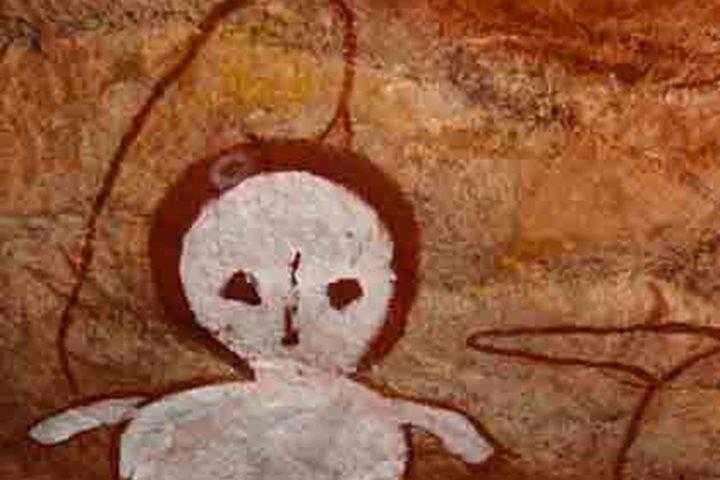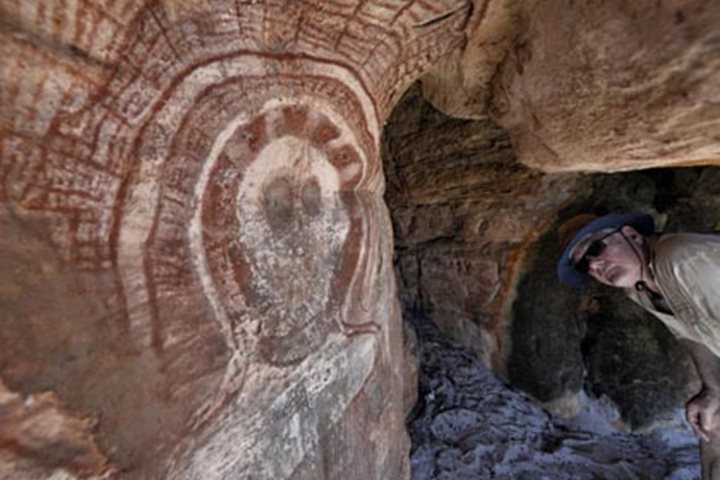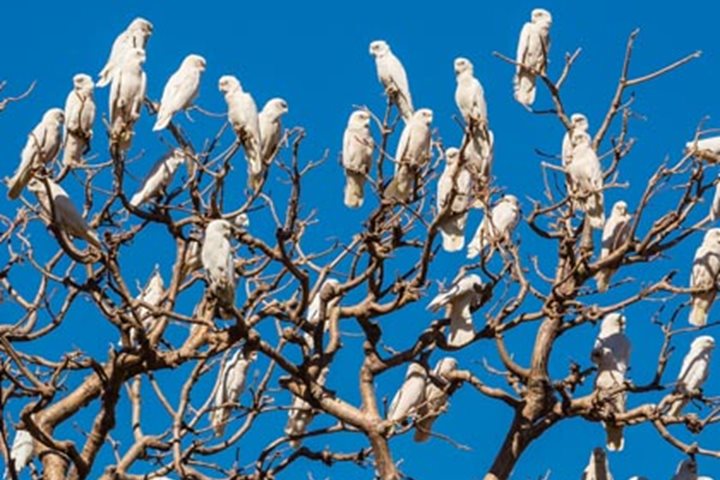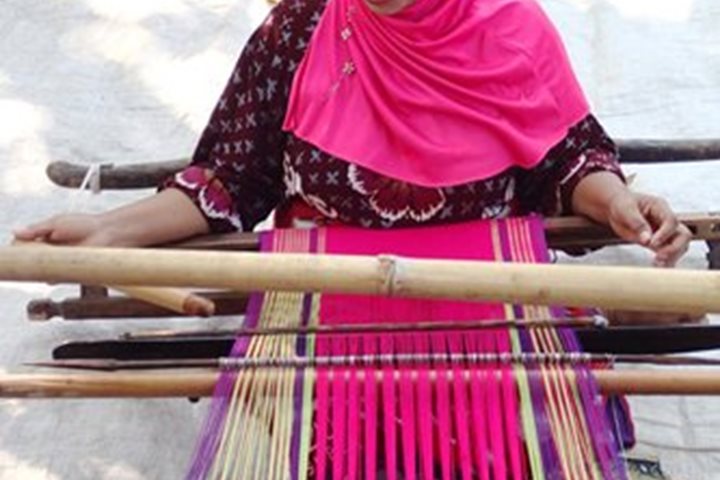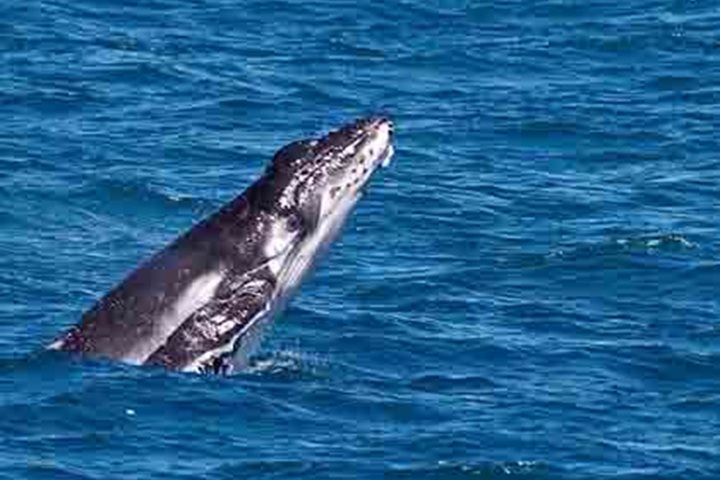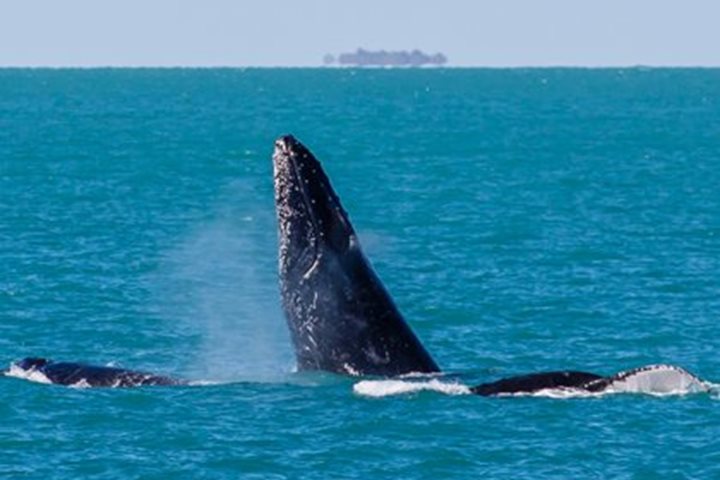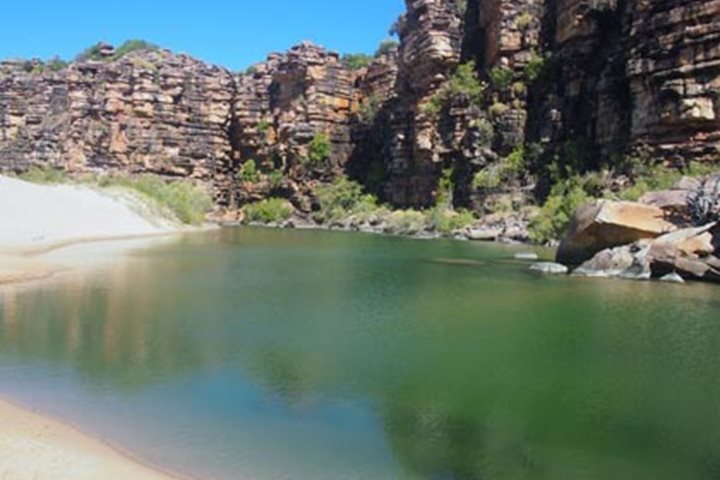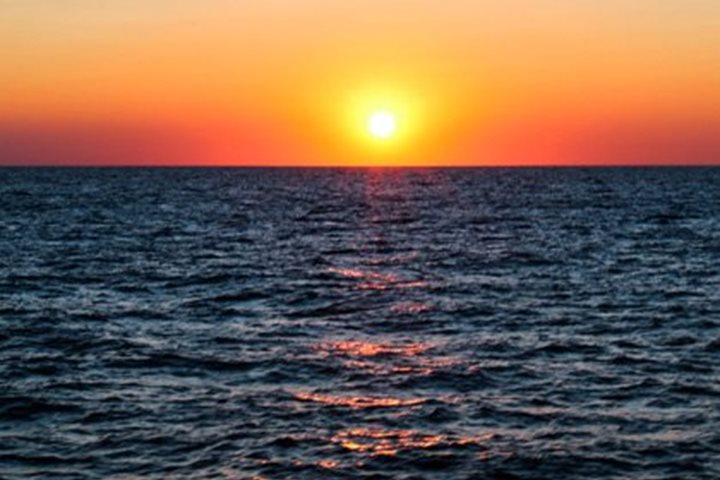CallTest +1.800.397.3348
Expedition Stories
Our fleet navigates the world in search of adventure. These are the stories they bring back…
Loading...
Loading...
Previous Reports
8/11/2014
Read
National Geographic Orion
Rowley Shoals, Western Australia
The moon does not fight. It attacks no one. It does not worry. It does not try to crush others. It keeps to its course, but by its very nature, it gently influences. What other body could pull an entire ocean from shore to shore? The moon is faithful to its nature and its power is never diminished. – Deng Ming-Dao, Everyday Tao: Living with Balance and Harmony The moving Moon went up the sky. And nowhere did abide; Softly she was going up, And a star or two beside- - Samuel Taylor Coleridge, The Rime of the Ancient Mariner The National Geographic Orion departed Broome, Australia last night, just as the sun was setting in the west and the full moon was rising in the east. But this was no ordinary full moon that we were navigating under - it is the biggest and brightest full moon of the year, truly a super moon. A super moon occurs roughly every 13.5 months, when the moon appears as much as 14 per cent bigger and 30 per cent brighter than a regular full moon. That's because the moon's orbit around the Earth is elliptical and lopsided, so that it's closer to the Earth on one side of the orbit than the other. On average, the moon is 384,000 kilometers away, but it is about 363,000 kilometers away at the closest point, its perigee. And it is around 406,000 kilometers away at its furthest point, its apogee. Last night the moon came into being full within the hour of it reaching perigee, at a distance from the Earth of only 356,896 kilometers away. The scientific explanation does not diminish the attraction most humans have with full moons. As the ship departed the tone was one of excitement and anticipation of what lie before. Our destination today was Rowley Shoals, a group of three atoll-like coral reefs south of the Timor Sea, about 260 kilometers west of Broome on the northwestern Australian coast. Rowley Shoals Marine Park was established in 1990 and expanded four-fold in 2004. Each atoll covers an area of around 80-90 square kilometers within the rim of the reef. Upon arrival we circumnavigated both Clerke and Imperieuse reefs searching for any possible location to safely offer snorkeling. Our crew launched a scout Zodiac and expedition staff went to evaluate in person the conditions at our planned snorkeling site. Sustained winds approaching 25 knots created surf and waves that prevented us from approach the edge of the coral reef. Our Captain positioned the ship as safely as possible to Rowley Shoals providing us a glimpse of this remote and pristine atoll. In the end, the view was beautiful, one few ever are privileged to experience, but we will have to wait to snorkel another day.
8/13/2014
Read
National Geographic Orion
Freshwater Cove
It would be easy to think of this landscape as a desert, to forget about the months of constant rain that deluge these now dry shores. Pandanus screw palms and eucalyptus trees punctuate the deceptively welcomingly appearing spinifex tufts that thrive atop the red sandstone. The building morning heat is delightfully diminished by gusts of cool wind and the always welcome breeze that riding in a Zodiac to a tropical sandy beach brings. The tidal range all over the Kimberely is significant, boasting some of the largest tides on the planet, augmented even more with recent occurrence of a super moon, and Freshwater Cove is no exception. At low tide our arrival on the beach provides a slightly longer hike than the one planned to visit the nearby cave paintings. We are greeted by the indigenous landowners that guide us to these images which can be conservatively dated to be over 40,000 years old. Daubed with ochre and shown the cool groundwater spring that looks no different from any of the dozens of nearby salty tidepools we head off into the bush to be shown the images of the spirits that are still honored and revered today. Wandjina mythology and iconography are one of the shared legends that connected many of the Aboriginal peoples in this region. A Wandjina is both a creator and guardian of the lands, the cave paintings that have been dutifully maintained, embody their power and are treated with the utmost respect. After being shown such hospitality by our guides for providing such a rich experience it seemed only fair to try and repay them in some fashion by sharing the hospitality of the onboard galley team and their tireless culinary feats. After all there are few things that can’t be improved with ice cream, particularly when you live in remote Western Australia! After more shore excursions and a few presentations it was time to raise the anchor and continue our expedition leaving the beautiful landscape, and treasures it holds, tightly in our memories and the hands of the people that call it home.
8/15/2014
Read
National Geographic Orion
Bigge Island
What an uplifting and stunning day at The Kimberley coast. Today we had the opportunity to visit Bigge Island, a place of significance for the Aboriginal culture and rock art. This rugged island holds many mysteries and secrets and also many unanswered questions. This is where we can contemplate the intriguing Wandjina style of rock art. We were able to see a representation of the Kaiara, or Sea Wandjina, a very powerful mystical entity for the aboriginal culture of this region. Wandjinas are considered to be the creators of human descendants, the seas, the land and laws, and are still able to exert their powers. The Wandjinas are intrinsically linked to the mythological life, social organization and seasonal movements of Indigenous Kimberley people. This particular Kaiara was exceptionally large in size, painted with red ocher and grooved eyes that seemed to watch every move in this important ceremonial and meeting ground. With its distinctive halo headdress representing the monsoon cumulous clouds, Kaiara is able to wield destructive power, controlling floods, cyclones and lightning. This site is also home to some controversial rock art. What makes these paintings so fascinating is the depiction of sailing ships and a man with European features who appears to be smoking pipes and sitting on small row boats. There is an ongoing debate about these notorious paintings, as no one knows for sure, who are the visitors and where did they come from. It has been suggested they could be Dutch sailors and others have suggested the images depict the arrival of Chinese ships. Or maybe they could be related to Macassans? This is a mystery still to be solved. After a delicious lunch savored on deck, it was time to head to another mysterious tour! This time we boarded our Zodiacs without knowing our destination… and what a delightful surprise! The expedition and hotel management team were waiting for us in a spectacular hidden tidal cave! Surrounded by turquoise waters, hidden in a little bay and protected from the wind, the cave performs as an amazing amphitheater with perfect acoustic conditions. With the guitar and cocktails in hand, we all sang songs that lifted our spirits, while enjoying our appetizing refreshments. What a way to end our gorgeous day in the unique and special Kimberley coast!
8/17/2014
Read
National Geographic Orion
Wyndham, Kimberley
This year marks the 130 th anniversary of the port town of Wyndham that was first established in 1884. The town was named after Lady Broome’s son, George Wyndham. The town blossomed when gold was discovered in Halls Creek. In 1885 the first track opened and approximately 5,000 gold miners passed through Wyndham during the gold rush. Transport along the track was filled with difficulties. Horses had to constantly be tended to, bullock drawn carts were reliable but slow, and donkey and camel teams became the beast of burden of choice. In fact camel teams tended by Afghan cameleers became vital on the Wyndham-Halls Creek run. As one old Kimberley resident noted, “people out here owe the camel everything for opening up the country.” The Kimberley was the last area in Western Australia where camels were based. A visit to the Afghan cemetery confirmed that cameleers were buried with their camels as the cemetery contains 10 Moslem graves dating from 1919-1942. After the gold rush ended, Wyndham experienced a second boom with the opening of the meat works in 1919. Cattle traveled overland from stations to the east and south. Workers arrived by state ship for the season that lasted 4-5 months, May through September. Britain’s tariff policy of ‘Empire preference’ gave Australian beef a huge advantage against its biggest competitor, Argentina. Although the boom lasted for almost 70 years, it came to an end with the closing of the meat works in 1985. These days almost 40,000 head of cattle are exported annually to China. Today Wyndham is a busy working port servicing the cattle and mining industries. Less than 700 full-time residents now call Wyndham home. We had an opportunity to see a glimpse of Wyndham’s past by visiting the historical museum, the remnants of the meat works, and the abandoned train yard. Wyndham has a few treasures in Pixie’s Tin Shed filled with useful items and Pixie herself sharing stories, Wyndham Town Hotel with a bar where we enjoyed refreshments served by Sue the owner and operator, boab trees along the roadway, road-trains barreling down the highway every thirty minutes, and crocodiles on the muddy banks below the pier. At low tide, pop-eyed mullets and mudskippers tried in vain to avoid predation by striated herons and great egrets. Wyndham is our last port of call in Australia before sailing across the Timor Sea to Timor Leste where swimming, snorkeling, diving and kayaking await us.
8/19/2014
Read
National Geographic Orion
Jaco Island
After missing our snorkel stop at Rowley Shoals we couldn’t wait for our scheduled snorkel stop at Jaco Island, and we weren’t disappointed, with what could be best described as the perfect day. After a leisurely breakfast we packed our snorkel gear and headed for the beach. It was a sunny day with light winds and as we approached the white sandy beach we could see the coral reef beneath the crystal clear water. The island was shaded by huge cassarina trees, a great place to put on the snorkel gear and get in clear cool water. There was an abundance of fish in all sorts of colors, we even saw Nemo hiding amongst a sea anemone, there was also plenty of hard and soft corals to keep us amused as we snaked our way in between them, but careful not to touch them as some are poisonous and others are very sharp. It was then time for lunch but we didn’t have to go far as the galley team bought over a massive BBQ to cook all our favorite foods including fish and marinated spare ribs. That’s not all – there was five different salads, prawns, and ice cream for dessert. But there was no time to rest as it was time for a ride on the glass bottom boat, a great way to learn about all the different species of fish and coral as the expedition team took us out to a fringing reef at the other end of the beach. It was then time for a beach walk along the white powdery beach and a paddle on the sea kayaks to finish a busy and very enjoyable day.
8/23/2014
Watch
National Geographic Orion
Badas, Sumbawa, Indonesia
“Travel far, travel often.” Captain Mike Taylor As the National Geographic Orion anchored at Badas, we were ready for another amazing experience on the Kimberley with Spice Islands journey. This was our last day at sea before heading to the Island of Bali. We were at Sumbawa, an Indonesian island that lies within the Pacific Ring of Fire. On board our local buses we visited the picturesque Pamulung Village, where we were welcomed by the head of the village and friendly residents. We learnt about the day-to-day living and had the opportunity to see the exciting traditional Buffalo race before visiting the former Sultan’s Palace. Ian Strachan, our undersea specialist, decided to practice his buffalo riding skills and had a go at the race. This got us all cheering for him in the midst of a wet, muddy, and smelly paddock! We also had the chance to see a beautiful wedding dance ceremony and some of the other local traditions such as rice pounding and weaving. After a delicious barbeque lunch it was our last chance to get wet and many went for a snorkel at Mojo Island. On board our Zodiacs we headed out to a healthy reef system and some intrepid divers had the chance to experience an amazing dive at the reef slope. Back on board, it was time to join the galley team and learn about the magic and hard work that goes into the creation of these delicious and scrumptious meals served on board. Our special guest Peter Hillary gave us a touching presentation about his famous father called “Sir Edmund Hillary – A tribute to an extraordinary life.” What a privilege to have the company of such a polite and brave explorer on board National Geographic Orion. We also had the chance to see our images taken during our amazing the trip during the photography slideshow. Then it was time for the Captain’s Farewell Cocktail Party, for one final drink to toast an amazing expedition!
8/12/2014
Read
National Geographic Orion
At Sea, Western Australia
At sunrise the National Geographic Orion was sailing toward the remote Kimberley region on the western coast of Australia. Today we savored a relaxing day at sea. One of the unique qualities of an expedition is that it illuminates the treasures of the places our itinerary includes. It gives us the opportunity to learn to see and to pay attention differently. Naturalists, National Geographic photographers, and global perspective speakers empower us with new perspectives, stories and knowledge. But the highlight of the day came to us as we were eating delicious food in our outdoor café, when a humpback whale calf breached and captured our attention. Our Captain, who demonstrated his skill maneuvering a vessel around whales so not to disturb them, provided us with a close-up look at a young calf with its mother from the observation deck and bow of the ship. Humpback whales migrate from the nutrient rich waters of the southern ocean to breed and give birth here in Western Australia during the winter season. This curious calf breached repeatedly to our delight. It seemed as curious about us as we were about it. Cameras set on continuous record caught the moment while our naturalists guided our eyes to watch for the twist in the breach, to find the eye of the calf, to see the white ventral pleats unique to humpback whales, and to look into the water to observe the tactile close interaction between this mother and her baby. As the Kimberley Coast came softly into view we found ourselves among more humpback whales. Captain treated us to a scenic cruise through Yampi Sound. The sun was low in the sky and the ancient rock this region is famous for was brilliant warm hues of red, yellow, orange, and brown. The golden hour of the day lured us out to enjoy the beauty.
8/14/2014
Read
National Geographic Orion
Camden Sound, Kimberley
Early this morning the National Geographic Orion sailed into Camden Sound. There is no road access and the nearest town is Kalumburu, 268 kilometers to the east. Camden Sound is bounded by the Bonaparte Archipelago to the east, the Buccaneer Archipelago to the west, and Montgomery Reef to the south. This area has received worldwide recognition as a crucial breeding and calving area for humpback whales. With almost 30,000 individuals, it is considered to be the single largest humpback population in the world. Humpback whales dotted the area. On the port side a mother and her newborn calf were swimming nuzzled next to one another. There were distant blows and breaches all around. But the highlight was watching three whales that were surface active. These waters are the breeding and birthing grounds for this herd. Males posture with one another for the opportunity to escort females ready to mate. One animal was breaching and the percussion could be heard on the bow of the ship. Blows, fluke-up dives, and head lunging increased the intensity of the encounter. Finally we turned away from the whales and anchored in Camden Harbour. This afternoon we were privileged to visit the historical remains of a failed attempt to tame the hostile Kimberley. Records show that in 1864, 124 Victorian sheep farmers attempted to colonize this area. They had been led to believe that there were verdant pastures for their flocks and that Camden Harbour offered a new beginning. Instead they found the harsh reality was they had been sold a pipe dream. In less than a year, 25 members of the settlement and all but 80 of the sheep had perished. Nature has gradually reclaimed the ghostly ruins of the settlement. A visit to nearby Sheep Island contained the graves of a few of the ill-fated settlers. Though it may be poor for sheep, the terrain proved perfect for the boab tree. These trees are an iconic species in the Kimberley region. Boabs range from 5 – 15 meters in height and lose their leaves during the dry season. The plant has a wide variety of uses, and most parts are edible. Aboriginal people obtained water from hollows in the tree. Newcomers to this area simply delight in the swollen bottle-shaped trunks of this tree alternately named by Aboriginals, gadawon.
8/16/2014
Read
National Geographic Orion
Kimberley: King George River
This morning we awoke to a spectacular Kimberley sunrise where Mother Nature created a few new colors. She also produced a quite breezy day, just enough to keep the temperature down. Our intrepid adventurers boarded the Zodiacs at 7:00 a.m. and made our way across a choppy Koolama Bay to the mouth of the King George River. As our flotilla of Zodiacs snaked its way along the river, we saw the stunning beauty of the gorge and the natural colours of the sandstone, exposed by the erosion taking place relentlessly. As we journeyed upriver, we observed osprey nests, eastern reef egrets, pied oyster catchers and of course salt water crocodiles. The sandstone canyon was spectacular and we took a plethora of pictures that we knew would not do the scenery justice. Close to the edge of the river and the falls, we saw great examples of ‘honeycomb erosion’ where water whipped up by the wind has dried within the sandstone structure, dislodging particles one at a time. A number of us had chosen the five-hour tour that included a hike to the top of the falls. After a brief chance to take photos of the waterfalls, we motored toward the north-eastern bank to commence the climb up the side of the gorge. With our expedition leader Darrin leading the way, we trekked up the steep track to the plateau from where we made our way to the top of King George Falls. The view was stunning and the clicking of camera shutters could be heard constantly. We saw the Zodiacs cruising along the sandstone walls, our fellow guests peering upwards in awe and the Zodiacs leaving a white trail of foam as they journeyed to their destination at the end of the gorge. A few of us could not resist the call of the inviting water and slipped in for a refreshing swim. Although it was quite shallow as this is nearing the end of the dry season, it was refreshing, it was then time to slowly make our way back down 100 meters below to our waiting Zodiacs. To our surprise, the ships galley had organized a treat for us once we had returned from the falls. Tucked in behind a rocky cliff hid a refreshment Zodiac, with champagne, orange juice and gourmet croissants being served. For those of us who didn’t do the walk up the falls there was a opportunity to do a mystery tour, to a secret lagoon across the other side of Koolama bay, and what a treat it was to turn a corner of a massive cliff to see a beautiful lagoon trapped by the falling tide, the surprises just keep on coming. The final Zodiacs arrived back to the National Geographic Orion just as the sun was slipping below the horizon and we were all treated to yet another display of colours that were unknown to us before our expedition in the Kimberley began.
8/18/2014
Read
National Geographic Orion
Day at Sea
The open ocean has a unique effect. In a way it is a no man’s land, just space between where you have been and where you are going, but it is so much more than that. For the countless species, big and small, deep and shallow, that call it home, our destinations we travel between represent the boundaries of their world that we are merely passing through. As we leave the sunburned rocks and marsupials of Western Australia for the welcoming (and swimmable!) waters and coral reefs of the Spice Islands, flying fish streak out like silver darts in front of our bow. Very briefly a solitary cloud contemplates peaking over the horizon but is dissuaded by the severe lack of company that it would find. In a way we are travelling back in time, retracing the reverse voyage of the people that first crossed this significant gap of water to populate the isolated island continent. Albeit in considerably more lavish style than was available those tens of thousands of years ago. After the sun has set on a full day of presentations, rejuvenating naps, and delicious meals, the evening program billions of years in the making is out on the darkened top deck. The Milky Way in all its splendor glitters overhead while the expedition team points out the constellations of the Southern Hemisphere. Scorpio and the Southern Cross hang high above, gleaming from so many light years away to shine onto the rolling waves as we push north. The clear night sky and unbroken horizon that surrounds us as we press forward invokes the imagination and memories. It is impossible to accept that a day at sea is just travel when we still freshly recalling where we’ve been and excitedly planning for the future make it very much part of the journey.
8/21/2014
Read
National Geographic Orion
Larantuka, Indonesia
The warmth and humidity of Indonesia could definitely be felt as we ventured outside to have breakfast on deck of the National Geographic Orion this morning. As we navigated between lush mountains and extinct volcanoes to find our anchorage, local fishermen passed close by in their colorful wood-planked boats in order to get a closer look at their visitors for the day. After a brief clearance from the local authorities, the Zodiacs were dropped and we were on our way for yet another adventure in this capital city on the island of Flores. Upon reaching the dock it was obvious that Larantuka is a central hub for this area that was once a colony of Portugal for 300 years. The hustle and bustle was impossible to ignore and almost overwhelming with motorbikes, buses, cars and people everywhere. Making our way through the crowds, we managed to find our local guides and be on our way to a local market. The market was full of almost anything and everything one could possibly need, and plenty of things that one probably wouldn’t as well. Not only were there an abundance of fruits, vegetables, fish of various states and live chickens, but you could also find plenty of household goods from toys to clothes in any every corner of the market. Navigating through the different stands and stalls was an adventure in itself, for one never knew when a motorbike would come buzzing through a walkway at any given moment. Our final stop at Mudakeputu Village would be only a few kilometers away and our arrival nearly caused a traffic jam on the barely two-lane road. The welcome procession was definitely a grand event with chanting, dancing, and sharing of both food and drink. The school in the village was teeming with young life as children flashed bright smiles and peace signs for our cameras. It was evident that not many foreigners visit this capital city since they all were just as eager to take pictures of us as we were of them. It was difficult to say goodbye, but we had to get back to the ship and be on our way for our next adventure. Once back onboard, we settled into the afternoon at sea with a demonstration by our pastry chef and brief interruption of Christiana’s shark presentation with a power outage. But the diligent crew of the National Geographic Orion quickly solved the problem and we were on our way again, eager for the next stop at Komodo National Park.
7/13/2015
Read
National Geographic Orion
King George River
The National Geographic Orion anchored in Koolama Bay on sunrise, and seamlessly lowered the Zodiacs for an early morning disembarkation. The sun was only just up as the first Zodiacs left the ship and headed up the King George River for our hike to the top of the falls. On the way up the river we stopped to look for wildlife, and to enjoy the stunning geology of the area, but our main focus was to get to the start of the hike before the sun was too high and the heat too great. As we were setting out from the Zodiacs and climbing the steep trail through the boulders to the top, our fellow ship-mates were eating breakfast and contemplating the day. But we had left when the winds, although stiff, had not reached their peak! As the Zodiacs left the ship for a cruise of the area, they were confronted with very strong winds and wet conditions. Meanwhile, at the top of the falls we explored the area. A rather dry wet season had seen that the river had dried early, and in fact the falls were reduced to a mere trickle, and in most places there were just small pools of water left of what might normally be a flowing stream. But this did not dampen our spirits with fantastic views of the river below, we had a group photo and then some time to explore the area. As we looked down on the river below we started to see the Zodiacs approaching with our fellow guests, and before long it was time to head down to the Zodiacs ourselves and join them in exploring the bottom of the falls. Some of us took advantage of a ‘shower’ under the trickling falls, and then we discovered a Zodiac with the Hotel Department handing out mimosas and ham and cheese croissants! Wow, what a wonderful touch! We then started to make our way back down the river, looking out for wildlife, with some Zodiacs having spotted dugongs, the odd crocodile, and turtles as they cruised. The wind had certainly increased, and as we headed back to the ship across the bay, our drivers had to navigate carefully to avoid the strong winds and rough seas from creating too much spray. Back onboard we had another fantastic lunch, and for many the afternoon was a chance to relax and enjoy and quiet afternoon, whilst for others a visit to a nearby beach was too tempting. A keen group of hikers headed to the top of a nearby hill, navigating up through the boulders and shrubs, to a great overlook. Others beach-combed and looked for things of interest along the beach, whilst the photographers spent time making images along the rocks and seashore. All too soon it was time to head back to the ship, as we raised the anchor and explored further along the Kimberley coast.
Showing 12 of 36


